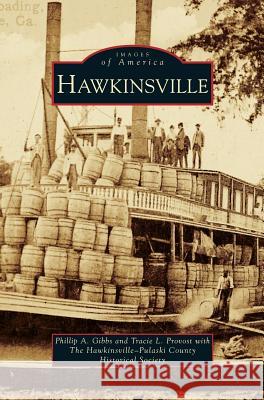Hawkinsville » książka
Hawkinsville
ISBN-13: 9781531633738 / Angielski / Twarda / 2008 / 130 str.
Hawkinsville lies along the banks of the Ocmulgee River in the heart of Georgia's wiregrass country. Surrounded by some of the state's most fertile cotton lands, the city became an important commercial center soon after its incorporation in 1836. By the eve of the Civil War, Hawkinsville boasted stately mansions, mercantile firms, gins, rail service, and a river port for the transportation of cotton. Although the Civil War took its toll, the city flourished in the late 19th and early 20th century. The revival of the cotton trade, together with the growing demand for the region's lumber and turpentine, boosted the city's economy and population. Newcomers from the North joined hands with long-established families to found banks, schools, hotels, churches, cotton mills, steamboat and railroad companies, and even a harness-racing track. Hawkinsville was hailed as Georgia's "Queen City of the Wiregrass."
Hawkinsville lies along the banks of the Ocmulgee River in the heart of Georgias wiregrass country. Surrounded by some of the states most fertile cotton lands, the city became an important commercial center soon after its incorporation in 1836. By the eve of the Civil War, Hawkinsville boasted stately mansions, mercantile firms, gins, rail service, and a river port for the transportation of cotton. Although the Civil War took its toll, the city flourished in the late 19th and early 20th century. The revival of the cotton trade, together with the growing demand for the regions lumber and turpentine, boosted the citys economy and population. Newcomers from the North joined hands with long-established families to found banks, schools, hotels, churches, cotton mills, steamboat and railroad companies, and even a harness-racing track. Hawkinsville was hailed as Georgias "Queen City of the Wiregrass."











